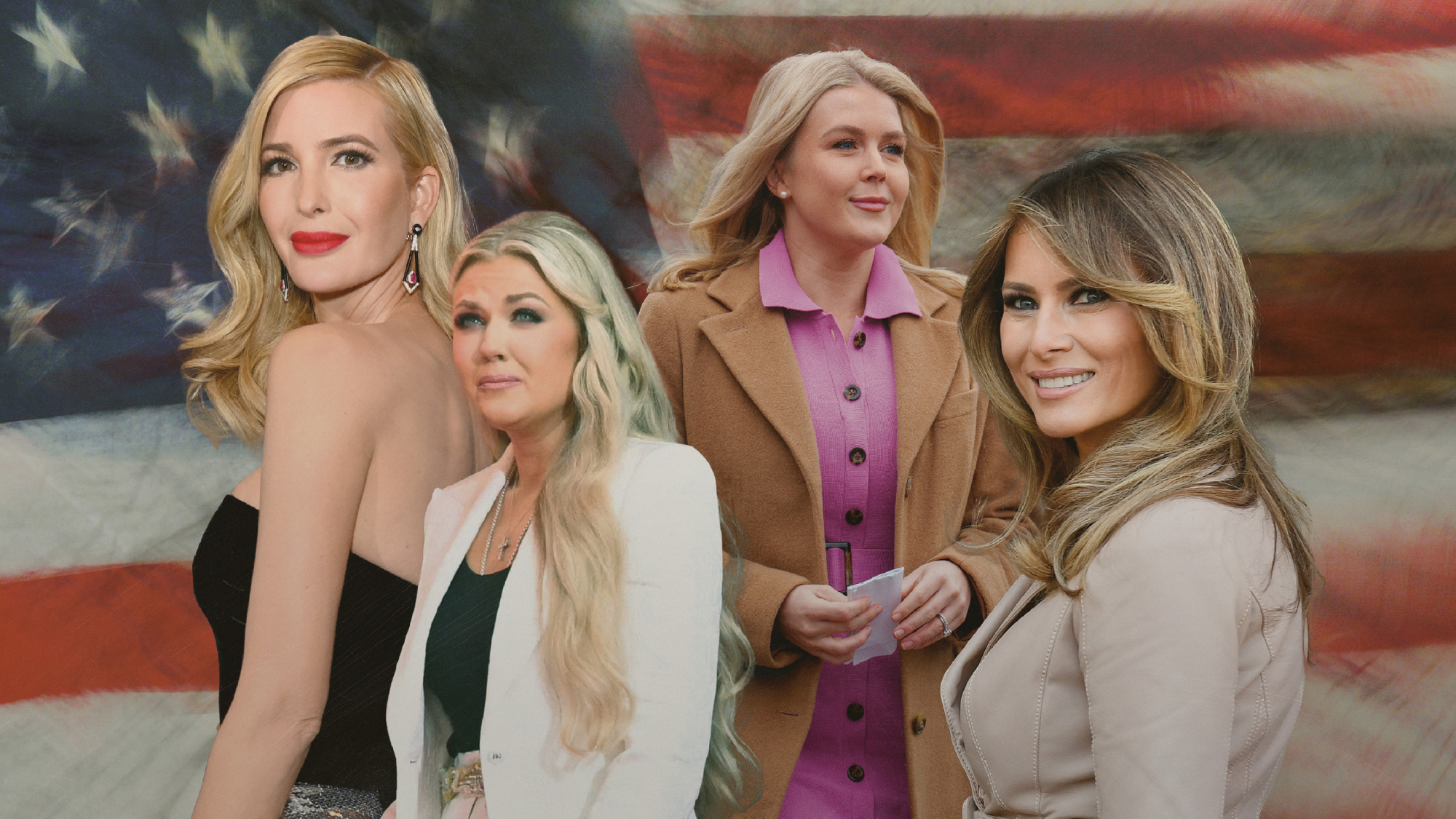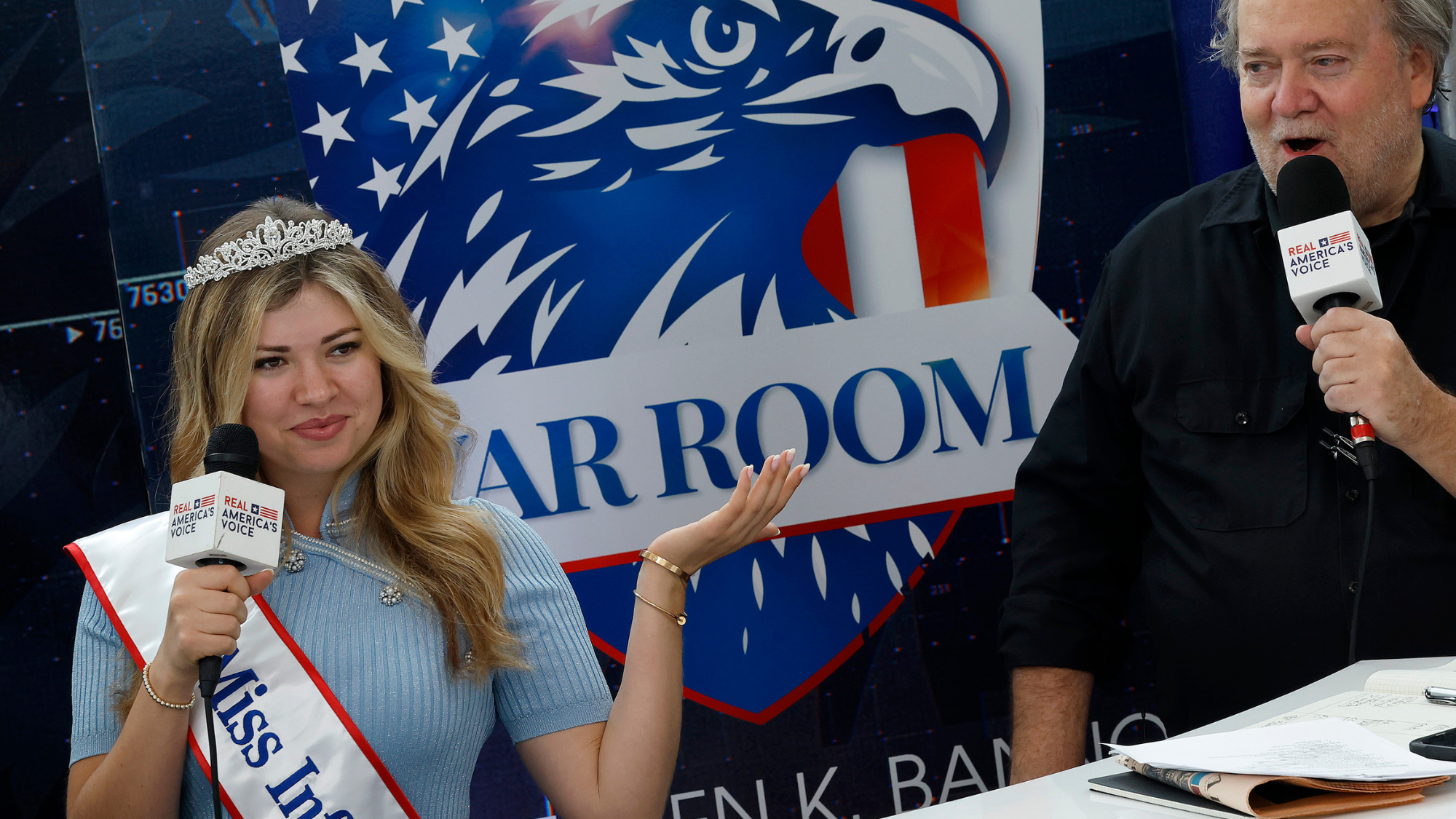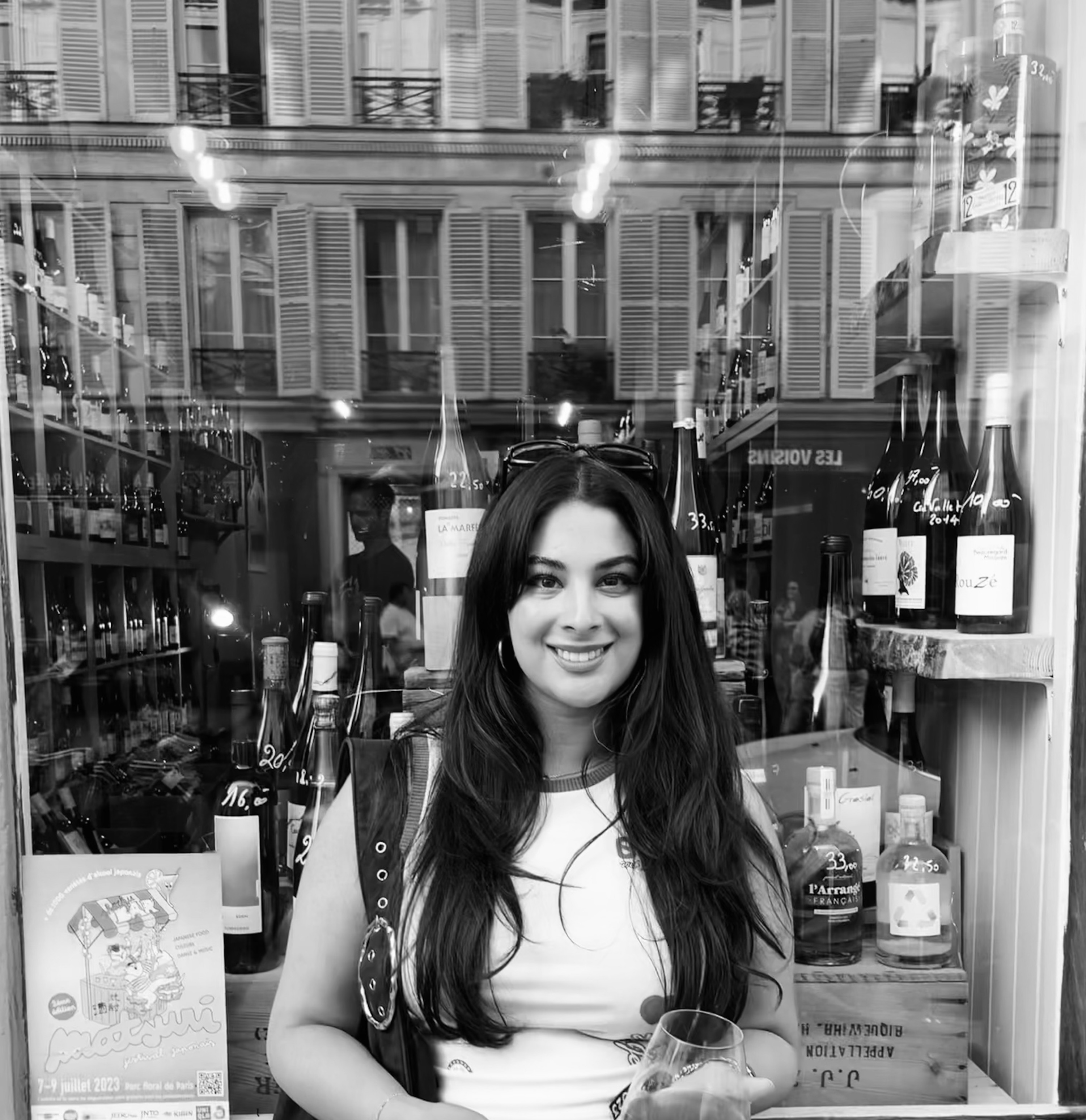The MAGA Beauty Aesthetic Tells the Story of America Today
In Trump’s circle, performing idealised femininity is a strategy


When a newly widowed, icy-eyed and perfectly made-up Erika Kirk steps up to a podium days after her husband’s assassination to declare his mission “stronger, bolder, louder,” she’s doing more than delivering a political message. She is embodying it. Her full lips, thick lashes and coiffed honey hair underscore a central tenet of MAGA beauty, that the personal is political. The aesthetic is not incidental—its doctrine.
What once could have been dismissed as vanity is now being weaponised by the right-wing as a visual language of loyalty. “Republican make-up” or “Mar-a-Lago Face” isn’t just about contour and lipstick. It’s a declaration of alignment and a form of control. This is what “Republican makeup” or “Mar-a-Lago Face” really means—and why it’s urgent to interrogate it.
While MAGA beauty may seem like an American export, its logic is already seeping into Britain’s own political and cultural bloodstream. From the tradwife revival on TikTok to the glossy image management of Conservative MPs and members of the Royal family, the equation of beauty with virtue and polish with power is firmly taking root on this side of the Atlantic. The same ideology pulses through the UK far-right “protect our girls” rhetoric—an ostensibly chivalric slogan with racial undertones and themes of patriarchal control.
A post shared by Melissa Rein Lively (@melissarlively)
A photo posted by on
Scroll through the feeds of conservative influencers and politicians’ wives and you’ll notice it instantly. Form-fitting skirt suits, sky-high stilettos, bouncy blow-dries and full coverage makeup: the look is immaculate, hyper-feminine and expensive. And, in the MAGA camp, it’s carefully engineered as a political tactic, as Melissa Rein Lively, founder of America First PR, an anti-woke publicity firm, tells me. “The Trump woman is elegant, powerful, hyper-feminine and always looks impeccable. Femininity is our weapon, and by being beautiful and elegant, you can get a lot more out of life than you can by looking like crap.”
This somewhat reactionary ethos is echoed through the movement. Natalie Winters, a 24-year-old White House correspondent and co-host of War Room with Steve Bannon (a podcast with significant force on the far-right of the political spectrum), compares her aesthetic to that of Reese Witherspoon’s character in Legally Blonde. “Think MAHA [Make America Healthy Again] meets Elle Woods,” she tells me. Unlike Elle Woods, however, this version of womanhood prizes polish and glamour not as rebellion, but as compliance and confirmation of traditional gender norms.

This philosophy runs far deeper, however, in many of the current administration’s policies. From the overturning of Roe v. Wade, to the rollback of transgender rights and attacks of DEI (diversity, equity and inclusion) initiatives, they are all extensions of the very same ideology that underpins this aesthetic. “Beauty is a core tenet of traditional femininity in conservative circles, and beyond,” says comments writer Jessica DeFino, who explores how beauty culture impacts people physically, psychologically and spiritually. “The closer a woman is to the ‘ideal’, the more power she might have access to. Republican women see this and adhere to it to align themselves with power and protect themselves from a certain amount of discrimination.” Yet, Defino adds, “In doing so, they reinforce the very systems of discrimination they seek protection from. If I appreciate anything about this particular aesthetic, it’s that it lays bare the reality of beauty standards: They are political weapons.”
The aesthetic is not spontaneous, then, it’s calculated. DeFino points out that major beauty and tech players (Amazon, Meta, TikTok and LVMH) were all represented among Trump’s inauguration-day allies. Each, in their own, nuanced way, helped shape the digital and commercial ecosystems that reward this particular face.
Celebrity news, beauty, fashion advice, and fascinating features, delivered straight to your inbox!
So, when Trump gushes over his press secretary’s appearance at rallies (“She’s become a star. It’s that face. It’s that brain. It’s those lips, the way they move,” he said), it’s not just a flippant comment. It reinforces a very specific version of white western beauty as a moral and political credential. Similarly, A-listers like Sydney Sweeney—who is arguably the apotheosis of this ideal—have been swiftly co-opted by the right, especially following her American Eagle “good jeans” row, which was called out by critics for its alleged overtones of eugenics ideology. The fashion industry is showing similar signs of regression: as ex-British Vogue Editor in Chief Edward Enninful recently observed on BBC Radio 4, the pendulum is swinging back towards the skinny, white woman ideal as beauty’s default setting following a period of increased diversity. Such shifts suggest that the aesthetic are being eagerly received beyond US politics.
A post shared by American Eagle (@americaneagle)
A photo posted by on
Back in Washington, the administration increasingly undermines women on the left by attacking their appearances. Not engaging with the favoured aesthetic is seen as a moral failure—something deeply at odds with the essence of femininity and womanhood. Rein Lively makes her derision clear: “I find them flat, uniform, stripped of individual beauty or soul. All their ideas about feminism seem tied up in this notion that you can’t be both beautiful and powerful. As a result, they have stripped themselves of power by not using the way they look.”
She adds, “To those who deeply value what it means to be a woman, spiritually, biologically and emotionally, the rejection of beauty feels like a rejection of womanhood itself.” Winters is even more flippant: “I think women on the left would be happier if they embraced their internal beauty by focusing on the importance of feminine energy instead of trying to be a masculine version of themselves. Just try it for a week!”
A post shared by Charlie Kirk (@charliekirk1776)
A photo posted by on
While Rein Lively and Winters frame the adherence to the set aesthetic as empowerment, it seemingly only offers a very narrow version of power, one that’s conditional on playing by the rules of male-dominated conservatism, that governs women’s bodies and punishes deviation - from refusing to wear makeup, to rejecting motherhood.
Kirk, for her part, is staunchly pro-life—she took a moment during her speech at her husband’s memorial service to assert that “being a mother is the single most important ministry you have.”
It wasn’t a surprising utterance. DeFino highlights that in conservative ideology, ‘woman’ is synonymous with ‘wife’, ‘mother’, and an object of beauty. “They believe it’s a woman’s duty to sacrifice her body to the demands of all three of these roles.” Accordingly, this rigid reductive beauty standard echoes a core tenet of right-wing politics—gender absolutism, that a woman is a woman, and a man is a man.
When embarking on his second term, Trump launched a veritable crusade against trans rights. Early executive orders included efforts to eradicate “gender ideology”, bar trans people from military service, restrict transgender care for minors, and he also attacked organisations that offer gender-affirming care. “On the first day of his second term, Trump declared there were 'only two genders: male and female’, and the exaggerated 'feminine' aesthetic that’s currently trending with Republican staffers, policy makers, and pundits is 100% an anticipation of and a response to that statement,” DeFino points out.
I can’t help but return to that memorable image of a steely Erika Kirk, standing under the lights, immaculate and controlled. Her beauty choices weren’t just masking her grief, they were also an act of political alliance. In the world of MAGA, to look the part is to play the part. And by doing so, she exposes the paradox at the heart of the movement. The “MAGA face” promises strength but delivers obedience and dresses up control as confidence. Beauty, here, isn’t liberation. It’s the leash.

Nessa Humayun is the Beauty Editor at Marie Claire UK. With over eight years of editorial experience across lifestyle sectors, Nessa was previously the Editorial Lead of HUNGER Magazine, and has bylines in British Vogue, Dazed, and Cosmopolitan. A self-confessed human guinea pig, Nessa covers everything from product must-haves to long-reads about the industry writ large. Her beauty ethos is all about using products that work hard, so you don't have to.